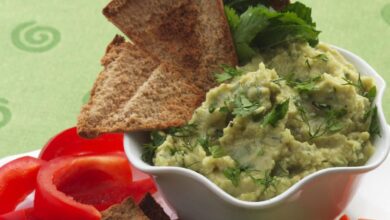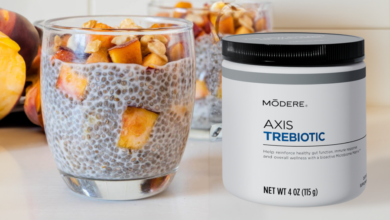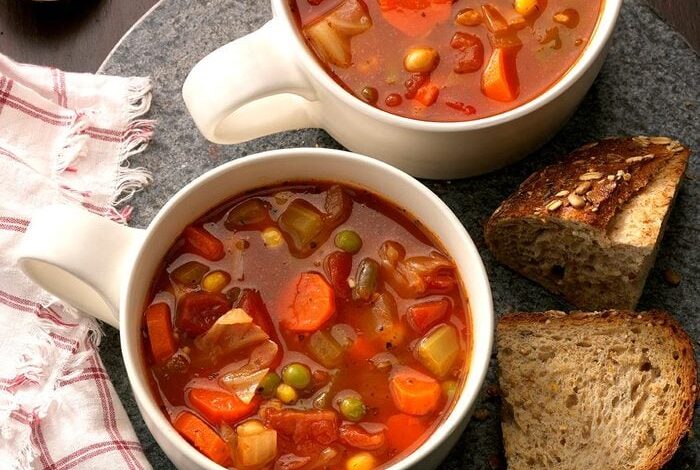
Diet Friendly Recipes for Hearty Soups and Stews
Diet friendly recipes for hearty soups and stews take center stage, offering a comforting and nutritious way to satisfy your cravings while staying on track with your health goals. These dishes are packed with flavor and essential nutrients, making them a perfect choice for anyone seeking delicious and wholesome meals.
Whether you’re looking to boost your fiber intake, manage your weight, or simply enjoy a warm and satisfying meal, these recipes provide a diverse range of options to suit your individual needs and preferences.
From classic chicken noodle soup to hearty lentil stews, the possibilities are endless. By using lean protein sources, an abundance of vegetables, and healthy fats, you can create soups and stews that are both flavorful and nutritious. The key is to focus on using whole, unprocessed ingredients and to minimize added sugars, salt, and unhealthy fats.
With a little creativity, you can easily adapt these recipes to fit your dietary restrictions and preferences, ensuring that every bowl is a delicious and satisfying experience.
Diet-Friendly Ingredients
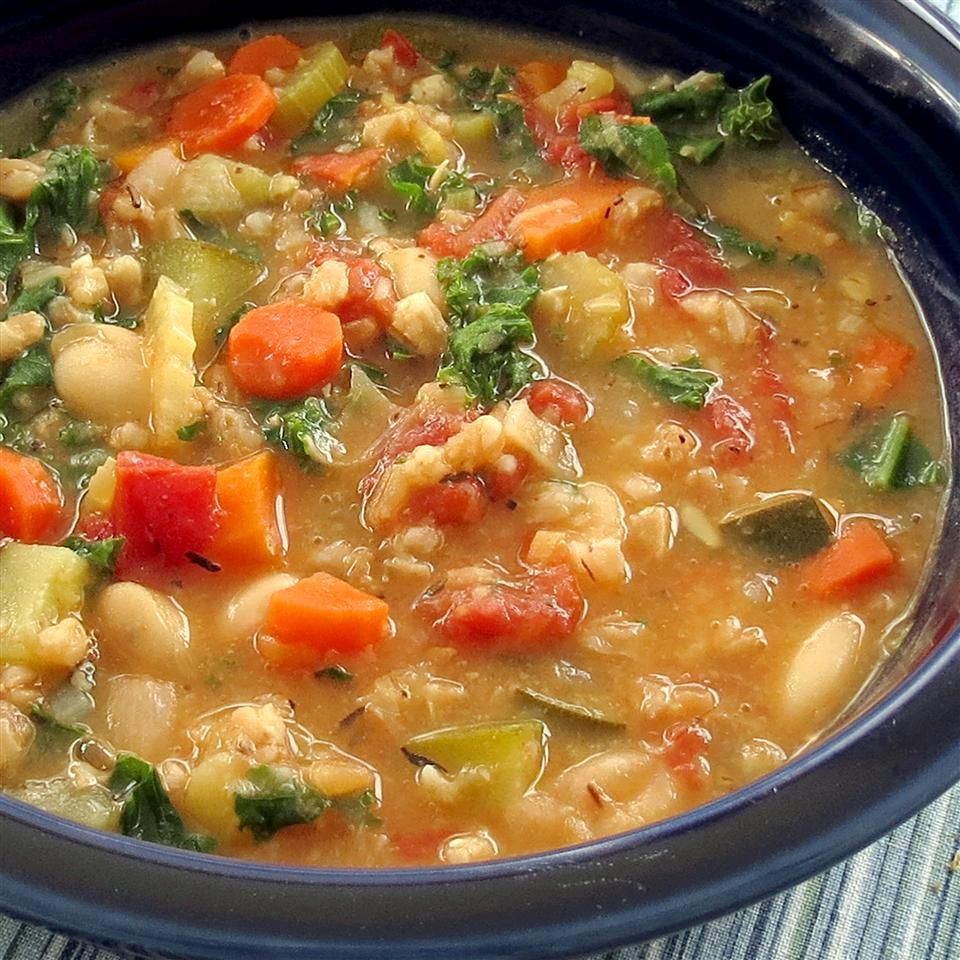
Creating hearty soups and stews that are both delicious and healthy doesn’t require sacrificing flavor or satisfaction. By carefully selecting ingredients, you can enjoy a comforting meal that fits your dietary needs.
Protein Sources
Protein is essential for building and repairing tissues, keeping you feeling full, and providing energy. When choosing protein sources for your soups and stews, focus on lean options.
- Lean Meats:Chicken breast, turkey breast, lean ground beef, and fish like salmon or cod are excellent sources of protein with lower fat content.
- Poultry:Chicken and turkey are versatile options that can be easily incorporated into soups and stews. Choose skinless options for a lower-fat choice.
- Beans and Lentils:These legumes are packed with protein, fiber, and essential nutrients. Black beans, kidney beans, lentils, and chickpeas are excellent additions to hearty soups and stews.
- Tofu:Tofu is a plant-based protein source that absorbs the flavors of the other ingredients in your soup or stew. It’s a good source of iron and calcium.
Vegetables
Vegetables add flavor, color, and essential nutrients to soups and stews. Choose a variety of vegetables to create a well-rounded meal. Focus on low-calorie options like:
- Leafy Greens:Spinach, kale, and collard greens are packed with vitamins and minerals and add a vibrant green color to your soup or stew.
- Cruciferous Vegetables:Broccoli, cauliflower, and Brussels sprouts are excellent sources of fiber and antioxidants. They can be added whole or chopped into smaller pieces.
- Root Vegetables:Carrots, potatoes, and sweet potatoes provide a sweet and earthy flavor. Choose starchy vegetables like potatoes in moderation.
- Other Vegetables:Onions, garlic, celery, bell peppers, and zucchini are versatile vegetables that add flavor and texture to your soups and stews.
Healthy Fats
Healthy fats are important for overall health and can enhance the flavor of soups and stews. Choose fats that are heart-healthy and provide essential nutrients:
- Olive Oil:Extra virgin olive oil is a good source of monounsaturated fats and antioxidants. It’s a great choice for sautéing vegetables or adding a drizzle to your finished soup or stew.
- Avocado Oil:Avocado oil has a high smoke point, making it suitable for cooking at higher temperatures. It’s also rich in monounsaturated fats and vitamin E.
- Nuts and Seeds:Nuts and seeds like almonds, walnuts, flaxseeds, and chia seeds add healthy fats, protein, and fiber to your soups and stews. You can add them whole or ground into a powder.
Spices and Herbs
Spices and herbs are essential for enhancing the flavor of soups and stews without adding extra calories. Experiment with a variety of spices and herbs to create your own unique flavor profiles.
- Common Spices:Black pepper, cumin, paprika, turmeric, and garlic powder are versatile spices that can be used in a wide range of soups and stews.
- Herbs:Fresh or dried herbs like oregano, thyme, rosemary, basil, and parsley add a fresh and fragrant flavor to your soups and stews.
Recipe Ideas and Variations
The beauty of soup and stew recipes lies in their versatility. You can easily adapt them to fit your dietary needs and preferences, and experiment with different flavors and ingredients to create your own unique dishes.
Soup and Stew Recipe Ideas
Here’s a table showcasing a variety of diet-friendly soup and stew recipes, each with a distinct flavor profile:
| Recipe Name | Main Ingredients | Dietary Restrictions | Serving Size | Calories per Serving |
|---|---|---|---|---|
| Chicken Noodle Soup | Chicken, noodles, vegetables | Gluten-free, low-sodium | 1 cup | 150 calories |
| Lentil Soup | Lentils, vegetables, broth | Vegetarian, vegan | 1 cup | 200 calories |
| Beef Stew | Lean beef, vegetables, broth | Low-carb, keto-friendly | 1 cup | 250 calories |
| Tomato Basil Soup | Tomatoes, basil, garlic, broth | Vegetarian, vegan | 1 cup | 100 calories |
| Creamy Mushroom Soup | Mushrooms, onions, broth, cream | Vegetarian | 1 cup | 180 calories |
Adapting Recipes to Different Dietary Needs
Adapting soup and stew recipes to different dietary needs is quite straightforward. * Gluten-free:Simply swap regular flour for gluten-free alternatives like almond flour, coconut flour, or rice flour. Use gluten-free noodles or rice noodles in place of traditional pasta.
Vegetarian Omit any meat or poultry from the recipe and replace it with plant-based protein sources like lentils, beans, tofu, or tempeh.
I’m always on the lookout for diet-friendly recipes for hearty soups and stews, especially during the colder months. They’re so satisfying and perfect for cozy nights in. I recently read an inspiring story about how a vacation helped Charlotte lose half her body weight, which really motivated me to find even healthier ways to enjoy my favorite comfort foods.
So, I’m back in the kitchen, experimenting with new recipes that are both delicious and good for you!
Vegan Avoid any animal products, including dairy and eggs. Use plant-based milk alternatives like almond milk, soy milk, or coconut milk. Ensure your broth is vegan-friendly and use plant-based butter or oil.
Low-carb Reduce the amount of starchy vegetables like potatoes and corn, and opt for low-carb alternatives like cauliflower rice or zucchini noodles.
Incorporating Seasonal Ingredients
One of the best ways to add freshness and flavor to your soups and stews is to incorporate seasonal ingredients.* Spring:Use fresh herbs like basil, parsley, and chives, as well as seasonal vegetables like asparagus, peas, and spring onions.
Summer Incorporate vibrant summer vegetables like tomatoes, zucchini, bell peppers, and corn. Add fresh berries to your soups for a sweet and tangy twist.
Fall Embrace the flavors of fall with root vegetables like carrots, sweet potatoes, and butternut squash. Use hearty greens like kale and spinach.
Winter Use winter squashes like pumpkin and acorn squash, along with hearty greens like kale and collard greens.
Diet-friendly recipes for hearty soups and stews are a godsend for athletes looking to fuel their bodies without sacrificing flavor. These recipes can be packed with protein and vegetables, making them satisfying and nutritious. For athletes aiming to lose weight, understanding the principles of calorie cutting for athletes looking to lose weight is essential.
These recipes can be adapted to fit calorie goals, making them a perfect choice for athletes on a weight-loss journey.
Cooking Techniques and Tips: Diet Friendly Recipes For Hearty Soups And Stews
The magic of hearty soups and stews lies in the slow, gentle transformation of ingredients into a symphony of flavors and textures. This section will explore techniques that elevate your cooking, ensuring your dishes are both delicious and healthy.
Diet-friendly soups and stews are a fantastic way to get your fill of warmth and nutrients without feeling deprived. They’re also a great opportunity to practice positive self-talk around food! Instead of focusing on restrictions, try framing your meals as a way to nourish your body and mind.
Check out this helpful article on positive ways to shift your self talk around food for some tips and tricks. With a little practice, you can cultivate a healthier relationship with food and enjoy your delicious, nourishing soups even more.
Slow Cooking
Slow cooking is a cornerstone of hearty soup and stew preparation. It allows the flavors to meld and the ingredients to become incredibly tender. The long, low heat breaks down tough proteins, releasing their inherent flavors and creating a richer, more complex broth.
- Enhanced Flavor Development:The slow, gentle heat allows the ingredients to release their natural sugars and flavors, resulting in a richer, more complex broth.
- Tenderization of Tough Cuts:Slow cooking tenderizes tough cuts of meat, like chuck roast or chicken thighs, making them incredibly flavorful and easy to eat.
- Convenience:Slow cookers are incredibly convenient. You can simply add your ingredients, set the timer, and let the appliance do the work while you focus on other tasks.
Using a Pressure Cooker or Instant Pot
For those seeking a faster approach, pressure cookers or Instant Pots offer a convenient way to achieve similar results. The high pressure inside the appliance speeds up the cooking process, allowing you to prepare a hearty soup or stew in a fraction of the time.
- Reduced Cooking Time:A pressure cooker can significantly reduce cooking time, making it ideal for busy weeknights.
- Nutrient Retention:The quick cooking time in a pressure cooker can help preserve the nutritional value of the ingredients, especially delicate vegetables.
- Versatility:Pressure cookers are incredibly versatile and can be used for a wide variety of recipes, not just soups and stews.
Creating a Flavorful Broth
A flavorful broth is the foundation of any great soup or stew. Using low-sodium options or creating your own broth at home can enhance the taste and control the sodium content.
- Low-Sodium Broths:Opt for low-sodium broths or bouillon cubes to reduce sodium intake without sacrificing flavor. You can also dilute regular broth with water to achieve a lower sodium concentration.
- Homemade Broth:Making your own broth is a rewarding experience. Simply simmer bones, vegetables, and herbs in water for several hours. This allows the flavors to extract, resulting in a flavorful and nutritious broth.
- Flavor Enhancers:Add aromatics like onions, carrots, celery, garlic, and herbs to your broth to enhance its complexity.
Thickening Soups and Stews
Thickening soups and stews without using high-calorie ingredients like flour or cream requires a bit of creativity. Here are some healthy alternatives:
- Starchy Vegetables:Use starchy vegetables like potatoes, carrots, or parsnips to naturally thicken the soup. Their starches will break down during cooking, creating a creamy consistency.
- Pureed Vegetables:Puree a portion of the cooked vegetables in the soup to create a smooth and thick texture. This method is especially effective for soups with a creamy base.
- Legumes:Legumes like lentils or beans naturally thicken soups and stews while adding protein and fiber.
Serving and Storage
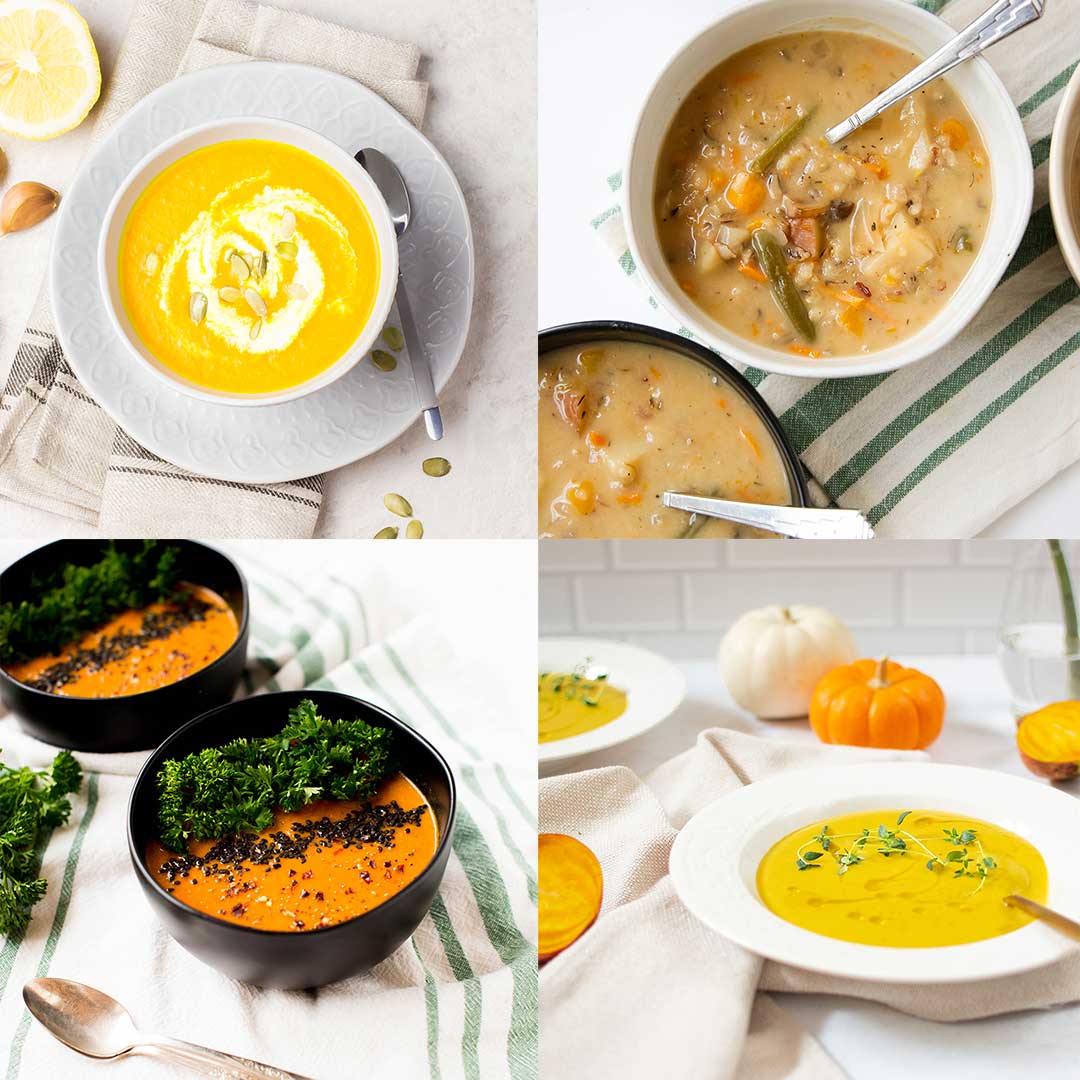
Serving hearty soups and stews is a delightful experience, especially when you consider the visual appeal and satisfying flavors that can be achieved. Whether you’re hosting a casual gathering or enjoying a cozy meal at home, presenting your culinary creations in an inviting way enhances the overall dining experience.
Serving Suggestions, Diet friendly recipes for hearty soups and stews
The presentation of your soup or stew plays a significant role in setting the mood for your meal. Here are some ideas to make your dishes visually appealing and satisfying:
- Use bowls of varying sizes and shapes:This adds visual interest to your table setting. For example, a rustic earthenware bowl for a chunky vegetable stew or a sleek white bowl for a creamy tomato soup.
- Garnish with fresh herbs:A sprinkle of chopped parsley, basil, or cilantro adds a burst of color and freshness.
- Add a dollop of yogurt or sour cream:This creates a creamy contrast and adds a tangy flavor to the soup or stew.
- Sprinkle with grated cheese:Parmesan, cheddar, or crumbled feta cheese adds a savory element and a satisfying texture.
- Serve with crusty bread or crackers:These provide a satisfying crunch and complement the flavors of the soup or stew.
Storing Leftovers
Proper storage is crucial to maintaining the freshness and quality of your soup or stew.
- Cool completely before storing:Allow the soup or stew to cool to room temperature before transferring it to an airtight container. This helps prevent bacterial growth.
- Store in the refrigerator:Keep the soup or stew in the refrigerator for up to 3-4 days.
- Freeze for longer storage:For longer storage, freeze the soup or stew in freezer-safe containers or bags. Thaw in the refrigerator overnight before reheating.
Repurposing Leftovers
Don’t let leftover soup or stew go to waste! Here are some creative ways to repurpose them:
- Make a salad:Add chopped vegetables, cooked chicken or beans, and a drizzle of dressing to create a hearty salad.
- Create a sandwich filling:Use the soup or stew as a filling for a sandwich or wrap.
- Add to pasta:Mix leftover soup or stew with cooked pasta for a quick and satisfying meal.
Last Point
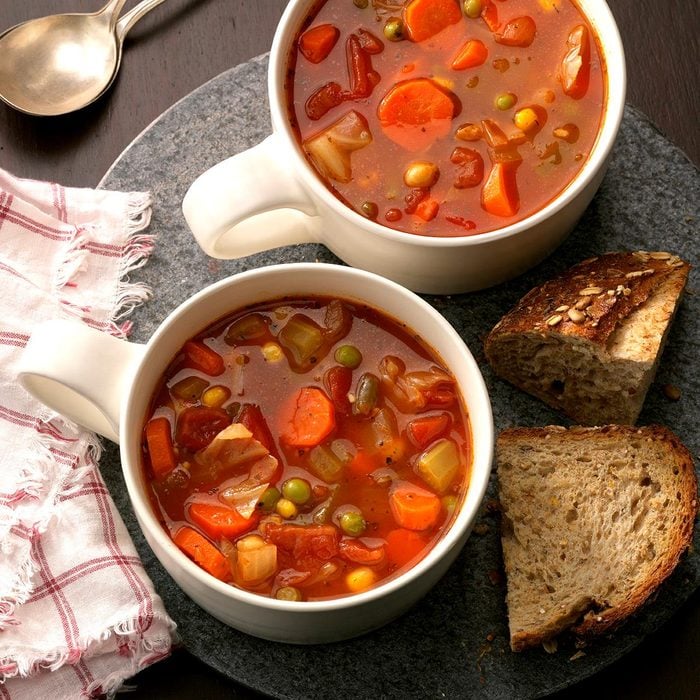
So, embrace the warmth and comfort of hearty soups and stews while staying true to your health goals. Experiment with different ingredients, flavors, and cooking techniques to create your own signature dishes. Whether you’re a seasoned cook or a beginner in the kitchen, these recipes offer a delicious and versatile way to enjoy a nutritious and satisfying meal.
Get ready to savor the flavors of wholesome goodness, one spoonful at a time.

